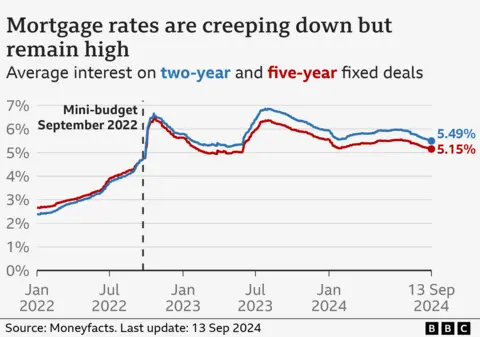Ukraine’s parliament is expected to approve a new wartime cabinet, as President Volodymyr Zelenskyy seeks the biggest overhaul of his government since Russia’s full-scale invasion almost 31 months ago.
The Verkhovna Rada is meeting on Thursday to dismiss several ministers who tendered resignations and approve nine ministerial candidates put forward by Zelenskyy’s ruling Servant of the People party, according to several party members.
But they said few new faces were expected to be appointed, with many of the nine positions to be filled by officials who were already serving in ministerial roles or the presidential administration. Zelenskyy’s critics have warned that the cabinet changes are likely to further concentrate power in the president’s hands and those of Andriy Yermak, his influential and controversial head of office.
Oleksandr Merezhko, an MP in Zelenskyy’s party, told the Financial Times that the president explained to his deputies late on Wednesday that a “new energy” inside the government is needed to take the country forward.
The decision to replace Dmytro Kuleba, one of Ukraine’s longest-serving foreign ministers, has been the most contentious. A career diplomat, Kuleba has been one of the country’s most effective interlocutors with Washington and EU capitals and played a crucial role in securing western military aid for Kyiv’s defence.
Andriy Sybiha, who has served as Kuleba’s first deputy minister since April, was appointed by parliament on Thursday to succeed his boss. Sybiha, an experienced, multilingual diplomat, is seen as one of only a few insiders to have the president’s ear. He has also been deputy head of Zelenskyy’s office in charge of foreign policy, served as ambassador to Turkey and held two posts at Ukraine’s embassy in Poland, roles that will help him navigate two important relationships as the new foreign minister.

The shake-up comes as Kyiv has reached a crucial point in the war against Russia, as it fights to halt Moscow’s steady advance towards the key logistics hub of Pokrovsk in eastern Ukraine while trying to solidify its hold on about 1,000 sq km of territory it has seized inside Russia’s Kursk region. On Thursday, Russian President Vladimir Putin claimed that the Russian army had begun pushing Ukrainian forces out of the area.
Meanwhile, Russia’s air strikes on critical infrastructure have increased concerns that Ukraine may be unable to restore enough of its energy production to light and heat homes this winter.
Uncertainty surrounding the upcoming US presidential election and internal pressures in the EU are also of concern to Kyiv, which fears the long-term security and financial commitments it relies on could soon wane.
“We are entering a very difficult period, especially during the coming winter. And to meet these challenges we need changes in the government,” Merezhko said.

Zelenskyy has offered little explanation for the reshuffle or its timing. In his meeting with party MPs on Wednesday, the president argued that some of the ministers he had asked to resign had grown too tired to do the job and could “no longer handle the mountain of issues that falls on them”.
Some MPs, including those within Zelenskyy’s party, questioned whether the reshuffle would revitalise the government.
“To be honest, there are no new faces here,” said one MP from Zelenskyy’s party who spoke on the condition of anonymity.
Yarosalav Zheleznyak, a deputy from the opposition party Holos, told the FT that the changes seemed arbitrary and were happening now because the president simply “wants to change something”.
Several outgoing ministers, viewed as loyalists of the president, will return to the government in similar roles, according to David Arakhamia, head of Zelenskyy’s party in parliament. On Telegram, he shared a list of the new appointments that had been agreed by Zelenskyy and his party members.
Olha Stefanishyna, Ukraine’s deputy prime minister for European and Euro-Atlantic integration, was reappointed to the position but also appointed to serve as the country’s justice minister.
Others will move from the cabinet to the president’s office, including Iryna Vereshchuk, who served as deputy prime minister overseeing occupied territories. She will now serve as adviser to the president on social issues.
The parliament on Thursday appointed Oleksiy Kuleba, a close ally of Zelenskyy, to serve as deputy prime minister for reconstruction and minister of the enlarged infrastructure ministry.
Oleksandr Kamyshin, minister of strategic industries and former state railway boss, will also become a presidential adviser on strategic industries inside the administration. He will be replaced by Herman Smetanin, chief executive of Ukraine’s state defence conglomerate Ukroboronprom.
Ukrainian officials with knowledge of the situation said Dmytro Kuleba did not want to step down as foreign minister but was told by the president this week that it was time to resign.
Western diplomats in Kyiv said they were not surprised by the move, as Kuleba’s forced departure had been rumoured for more than a year. But they were struck by the timing.
US secretary of state Antony Blinken wrote on X that he had spoken with Kuleba “to thank him for his principled leadership of Ukraine’s foreign policy”.
Kuleba, in response, thanked Blinken “for his ironclad support for Ukraine”.

















































